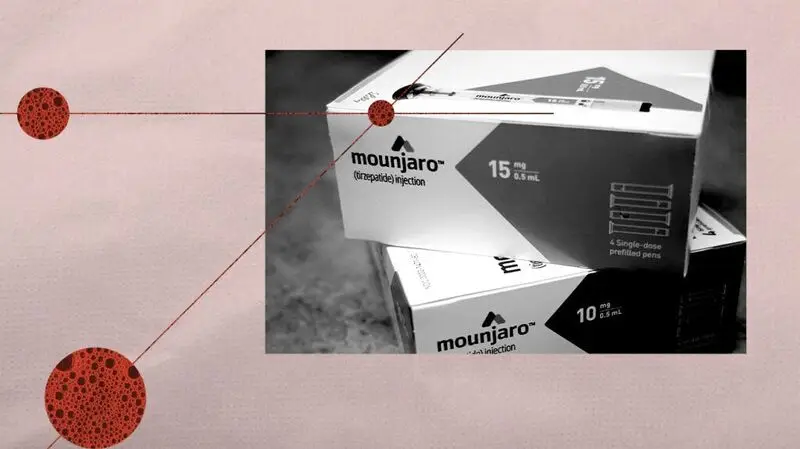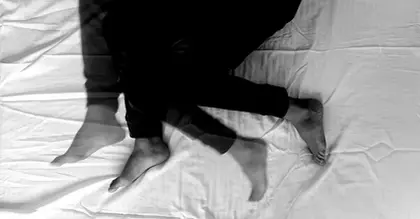
- Over the last few years, the interest in GLP-1 drugs for weight loss has skyrocketed.
- Currently, the most common delivery system for GLP-1 medications is through pre-filled injection pens designed to provide four weeks of medication.
- Many GLP-1 users have noticed that after their four expected doses, there’s still medication leftover in their injection pen, which has been dubbed the “golden dose” by GLP-1 users.
- However, experts agree that using this “golden dose” is risky and instead should be discarded properly.
Over the last few years, the interest in
While some GLP-1 medications, like Ozempic and Mounjaro are designed to treat diabetes and have been prescribed off-label to help people without diabetes lose weight, others like Zepbound and Wegovy are prescribed for weight loss.
As of 2024, researchers estimated that about 12% — or one in every eight adult Americans — had ever taken a GLP-1 medication. And from 2019 to 2024, the percentage of adults prescribed a GLP-1 to treat obesity rose from 0.30% in 2019 to 2.05% in 2024, an increase of 586.7%.
Currently, the most common delivery system for GLP-1 medications are through pre-filled injection pens used for four weeks.
“The way these meds are delivered is through a pen that delivers a certain amount of medication each week — it’s a single pen that delivers multiple doses,” Mir Ali, MD, a board certified general surgeon, bariatric surgeon and medical director of MemorialCare Surgical Weight Loss Center at Orange Coast Medical Center in Fountain Valley, CA, explained to Medical News Today. “So each time they use the pen, it gives them the dose that’s required.”
However, many GLP-1 users have noticed that after their four expected doses, there’s still medication in their injection pen, providing them with possibly a fifth dose, or what’s been coined the “golden dose” by GLP-1 users.
But is this fifth dose safe to use? If not, then why is there extra medication in the pen to begin with? And how should you dispose of any medication left in the pen?
MNT spoke with four experts to get the right answers to these questions.
Earim Chaudry, MBBS, chief medical officer at U.K.-based digital health provider Voy, says the “golden dose” refers to a small amount of liquid left in the injector pen after taking the four prescribed doses.
“Each Mounjaro pen contains 2.4ml officially with a small extra overfill for priming,” Chaudry gave as an example to MNT. “Each dose uses 0.6ml — just enough for four, accurate, pre-measured doses of Mounjaro. That leaves a small amount of liquid behind.”
“The leftover liquid is not a bonus dose — it’s a deliberate overfill — a standard medical practice built into the pen to ensure complete delivery of each injection and account for any small variances in delivery,” he said.
When asked if it’s safe for GLP-1 users to take the potential remaining fifth dose in an injection pen, Chaudry said the short answer is no as it can come with serious risks.
“This leftover volume is a built-in buffer, not a usable dose,” he continued. “The associated risks include underdosing — the leftover liquid is not a full, measurable dose which can reduce the effectiveness of treatment. (Or) overdosing — without dose control, patients may inject too much, increasing the risk of side effects like nausea, vomiting, diarrhea, or constipation.”
Hans J. Schmidt, MD, chief of bariatric surgery and director of the Center for Weight Loss and Metabolic Health at Hackensack University Medical Center in New Jersey, agreed about it not being safe to use the “golden dose.”
“Medical experts do not recommend this and the (Mounjaro) drug maker has warned that the process of ‘breaking into the pens’ is not clean and could put users ‘at risk of harm including’ infection due to potential bacteria, an abscess, (and) if an abscess is left untreated, it could progress to sepsis.”
And Ali said as the GLP-1 injector pens are normally designed to stay sterile for only four weeks.
“[I]f you’re going to use an additional dose a week later, you may not have the same sterility as the first four doses. There’s some risk of introducing bacteria into your system using a pen that’s been out longer than recommended.”
— Mir Ali, MD
According to news reports, the potential risks associated with using the remaining medication in the pen as a fifth dose has reportedly spurred Eli Lilly, the maker of Mounjaro, to redesign its injector pen to eliminate the extra liquid.
“All medications, regardless of the class or subtype, have been standardized based on respective dose titration and its application related to the safety, efficacy and intended mechanism of action as they were researched and investigated,” added Monique Richard, MS, RDN, LDN, a registered dietitian nutritionist and owner of Nutrition-In-Sight. “In other words, manipulating a prescription outside of the intended use or extending it may cause safety concerns and consequences unaccounted for in research studies.”
If it’s unsafe to use any leftover medication in the pen after four weeks of injections, GLP-1 users may wonder what’s the safest way to dispose of it.
“It’s a pen with a needle, so it’s supposed to be disposed of in a sharps container,” Ali said. “But the medication itself, as long as it’s in the pen, it’s not going to cause a problem. It’s just if people are using it, there’s potential hazards to using that additional medication in there.”
“Once the four pre-measured doses have been administered, used pens, including any remaining liquid, should be disposed of safely,” Chaudry detailed “Unscrew and discard the needle into a sharps disposal container. The needle must never go into household waste. After removing the needle, discard the empty pen in a sharps container or household waste. Dispose of the needles in a sharps container.”
“According to the manufacturer (of Mounjaro), the KwikPen contains an extra solution to allow for the ‘necessary priming before each injection’ in addition to delivering the four full doses. The manufacturer’s instructions say to discard the pen after four doses or 30 days after its first use, regardless of any remaining liquid.”
— Hans J. Schmidt, MD
If there’s more medication in a GLP-1 injector pen than what you need for four doses, some users may think increasing their dosage will help them lose weight faster.
Not so, Ali said.
“The way the meds are designed, you start at a lower dose and gradually work your way up,” he detailed. “And the reason for that is the side effects seem to be more dose-related and that gives your body time to adapt to the side effects. So patients who advance too quickly to a higher dose typically have more severe side effects and may not be able to tolerate the medication.”
There is no ‘secret’ extra dose“The idea of a ‘golden dose’ may be tempting for patients, but safety must come first. The leftover liquid in the pen is not a secret fifth dose, and trying to use it can lead to inaccurate dosing, contamination and serious side effects. If patients feel unsure about their current dose, or find that it isn’t working as expected, they should speak to a clinician. Self-adjusting can lead to underdosing, overdosing or side effects, and the health risks associated with these.”
— Earim Chaudry, MBBS
And Richard emphasized the importance of people using GLP-1 medications to work closely with their healthcare team, including a registered dietitian nutritionist (RDN), and fully follow instructions for use related to any prescription medication.
“When an individual goes rogue it can be a real safety concern — so also understanding why may be necessary,” she continued. “Are they financially limited and trying to make it last longer? Do they understand the dosing instructions? Are they health literate with the possible side effects, risks or outcomes of this additional dose?”
“I would encourage our readers to think: Let’s be smart, strategic, and savvy when using some of these tools, but prioritize safety,” Richard added.





